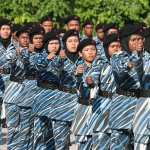THE US recently deployed B-2 bombers, capable of launching powerful bunker-busters, near Iran as a stark warning regarding its nuclear program if no deal is reached.
However, experts believe even a US-Israeli attack, while potent, would only temporarily hinder Iran’s suspected pursuit of nuclear weapons, a claim Iran denies. They also cautioned that an attack could lead to Iran expelling UN nuclear inspectors.
The 2015 nuclear deal had extended Iran’s “breakout time” (time to produce bomb-grade material) to at least a year, from a current estimate of days or weeks. After the US withdrew in 2018, the deal collapsed, and Iran exceeded its limits.
Trump sought new restrictions, warning of bombing if no agreement was made, a threat echoed by Israeli Defense Minister Katz, who claimed Iran was more vulnerable and Israel had an opportunity to eliminate the “existential threat.” Iran’s dispersed nuclear sites would necessitate widespread strikes, but the IAEA lacks full knowledge of its equipment locations.
While Israel could strike many sites, it’s risky. The US, with its Massive Ordnance Penetrator deployable by B-2s (which Israel lacks), is better equipped for hardened targets like Natanz and Fordow (deep underground enrichment plants). General Wald suggested a US attack would be faster and more effective but still take days.
Analysts like Eric Brewer warned that strikes would only buy time and risk pushing Iran towards a bomb, disrupting but not destroying the program. They emphasised that Iran’s advanced enrichment knowledge is irreversible, making preventing rebuilding a constant challenge.
Kelsey Davenport noted Iran’s likely response to attacks would be to harden and expand its facilities.
With weakened IAEA oversight since 2015, analysts fear an attack could lead to Iran expelling inspectors, as North Korea did before its first nuclear test, a point underscored by Iranian security official Shamkhani.
-BTS Media



